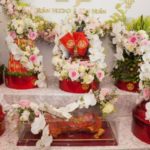A wedding is one of the most significant events in a person’s life, especially for a bride. Today, let’s delve deeper into the detailed sequence of wedding rituals that take place at the bride’s house!
1 Betrothal Ceremony
Ritual Items to Prepare
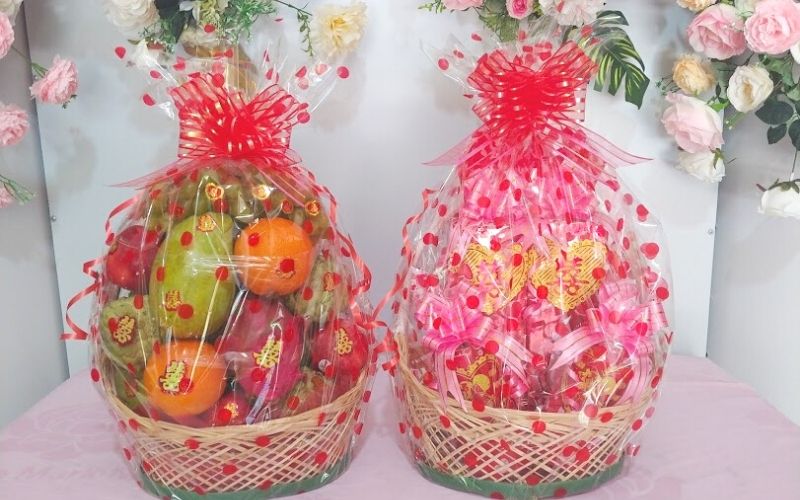 Ritual items needed for the betrothal ceremony
Ritual items needed for the betrothal ceremony
While being an indispensable ritual in every wedding at the bride’s house, the betrothal ceremony does not require elaborate preparations. Its purpose is to bring the parents of the bride and groom together, allowing them to get to know each other and discuss plans for the upcoming wedding. Topics typically include the date and time for the engagement and wedding ceremonies, the number of betrothal gifts, and so on.
Additionally, the ritual items you need to prepare for this day are simply betel, areca nuts, cigarettes, tea, wine, fruits, and sweets, all in even numbers, to be offered at the bride’s family altar.
Sequence of the Betrothal Ceremony
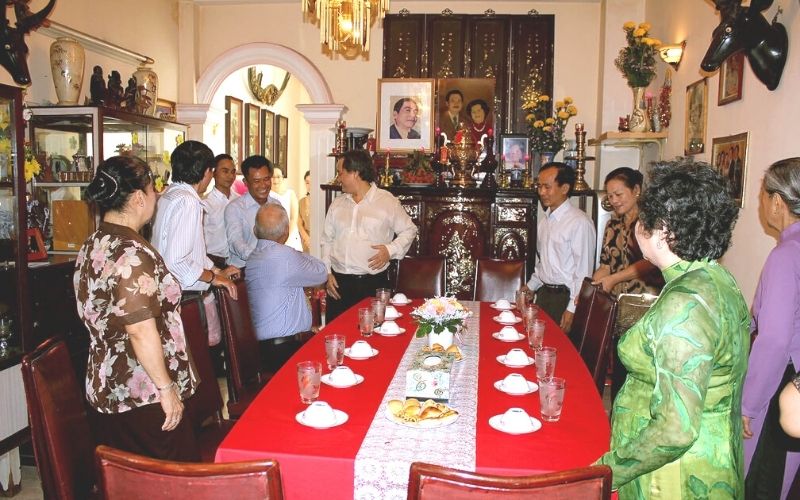 Sequence of the betrothal ceremony
Sequence of the betrothal ceremony
On the day of the betrothal ceremony, the main participants are the immediate family members of the bride and groom, such as parents, siblings, and close relatives. The sequence of the ceremony is as follows:
- Before the ceremony, the bride’s family will ensure their home is neat and tidy, with tables and chairs arranged and tea, candies, and cigarettes prepared to welcome the guests.
- When the groom’s family arrives, the two families will greet each other and exchange gifts. Then, the bride’s family will light incense and offer the gifts at their family altar.
- Finally, the two families will engage in conversation, getting to know each other and discussing the selection of dates and times for the engagement and wedding ceremonies. The bride’s family may also prepare a small feast for the two families to share a meal together on this occasion.
2 Engagement Ceremony
Ritual Items to Prepare
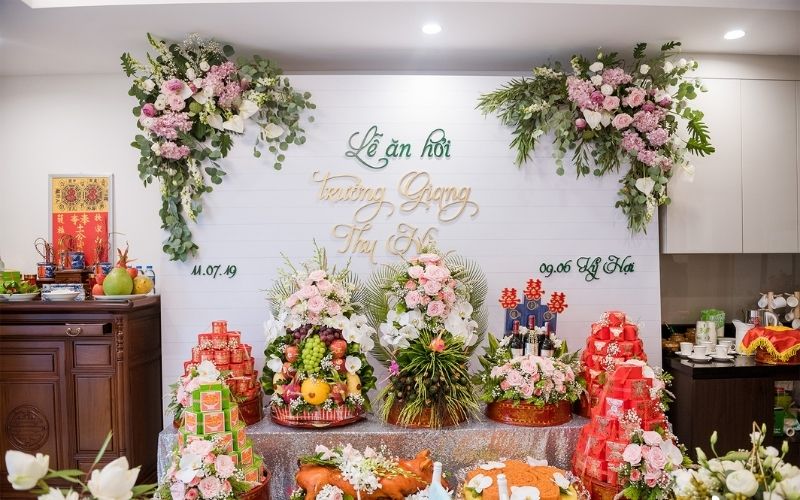 Ritual items needed for the engagement ceremony
Ritual items needed for the engagement ceremony
If the betrothal ceremony is considered the first step in a daughter’s journey to her husband’s house, the engagement ceremony serves as a formal confirmation and announcement of the groom’s family’s marriage proposal and the bride’s family’s consent. Therefore, the engagement ceremony usually involves a larger number of participants, including close and distant relatives of the bride and groom.
Moreover, the ritual items to be brought to the bride’s house during the engagement ceremony must be carefully and adequately prepared. They typically include trays of fruits, cakes, betel and areca nuts, tea, and wine (or beer)…
Sequence of the Engagement Ceremony
As mentioned earlier, the engagement ceremony holds great significance, especially for the bride. Thus, the sequence of rituals should be conducted solemnly and comprehensively, specifically as follows:
 The groom’s family prepares to carry the trays to the bride’s house during the engagement ceremony
The groom’s family prepares to carry the trays to the bride’s house during the engagement ceremony
Before the ceremony, the tray bearers from both families should dress neatly and uniformly. The male tray bearers typically wear white shirts with ties or traditional long robes, while the female tray bearers wear long dresses or long robes with subtle colors and patterns, ensuring they do not outshine the bride.
As they approach the bride’s house, the person leading the groom’s family delegation must be a senior family member, usually starting with the groom’s grandparents or parents. Upon reaching a distance of about 100 meters from the bride’s house, the male tray bearers will stop and form a balanced line.
At the appointed time, the groom’s family representative will ask for permission to bring the ritual items into the bride’s house. The male tray bearers will then proceed inside and stand opposite the female tray bearers, who will also be lined up. Together, they will offer the ritual items at the family altar and exchange lucky money.
Next, once everyone is seated, the bride’s family will offer tea, and the two families will greet each other. At this point, the groom’s family representative will stand up, explain the purpose of this important day, and introduce the ritual items brought by their family. The bride’s family representative will then express their gratitude and accept the engagement gifts.
 The engagement ceremony is attended by many close relatives of the bride and groom
The engagement ceremony is attended by many close relatives of the bride and groom
While the two families converse, the groom will be allowed to enter the bride’s private room and escort her out. Then, the couple will pour tea and offer it to the elders and relatives of both families as a sign of respect and gratitude.
After the conversation and tea offering, the bride’s mother will take the ritual items and envelopes with wedding gifts from the trays and place them on the family altar, lighting incense to honor their ancestors.
To conclude the engagement ceremony, the two families may take commemorative photos, share a meal together, and discuss the preparations for the upcoming wedding.
Additionally, before leaving, the bride’s family should pack some fruits and gifts, such as tea, candies, and fruits, for the groom’s family, as a gesture of goodwill.
3 Wedding Ceremony
Ritual Items to Prepare
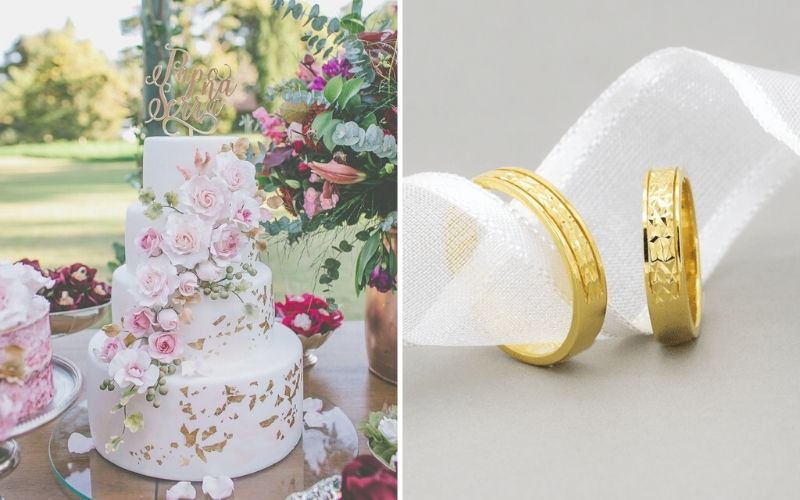 Ritual items needed for the wedding ceremony
Ritual items needed for the wedding ceremony
As one of the most important ceremonies, the wedding ceremony should be organized solemnly, with the participation of most relatives, friends, and colleagues from both families. Therefore, the wedding banquet is often held in a restaurant, hotel, or similar venue, offering a variety of elaborately prepared dishes, from appetizers to desserts.
Additionally, on this special day, the bride will wear a gorgeous white gown and carry a large, beautiful bouquet, while the groom’s family will prepare betel and areca nuts, wedding rings, and a car to bring the bride to their home and host the wedding banquet.
Sequence of the Wedding Ceremony
Depending on the venue, there may be slight variations in the way the wedding ceremony is conducted. However, the general sequence of rituals is as follows:
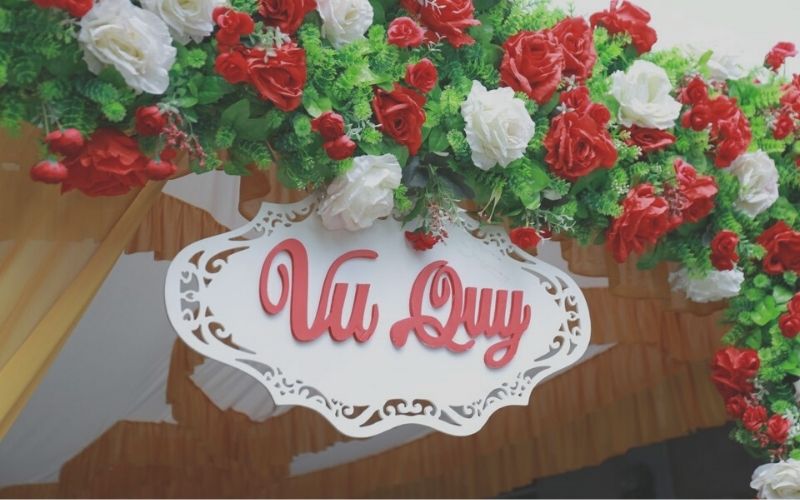 The returning home ceremony is one of the rituals performed during the wedding ceremony
The returning home ceremony is one of the rituals performed during the wedding ceremony
Returning Home Ceremony: After the groom’s family presents betel and areca nuts to the bride’s family, the groom will escort the bride from her private room, and the couple will pay respects to their ancestors at the bride’s family altar. Then, the groom’s family representative will request permission to take the bride to their home, and the bride’s family representative will express their gratitude and consent.
Wedding Ceremony at the Groom’s House: Upon arriving at the groom’s house, the couple will light incense and perform a worship ritual at the groom’s family altar. Afterward, the groom’s family representative may give a speech to thank the guests and introduce the bride to the groom’s parents. The couple will then exchange gifts with the groom’s family and invite the guests to the banquet.
 The wedding ceremony can be held at a restaurant or hotel
The wedding ceremony can be held at a restaurant or hotel
Wedding Ceremony at an Outside Venue: If the couple chooses to hold the wedding banquet at a restaurant or hotel, their families should arrive early to prepare and take commemorative photos before receiving guests.
During the wedding banquet, the couple will perform various rituals, such as pouring wine, drinking from the same glass, cutting the wedding cake, exchanging wedding rings, visiting each table to thank the guests, and finally, the groom will stand on the stage to express his gratitude and bid farewell to the guests.
4 Post-Wedding Visit
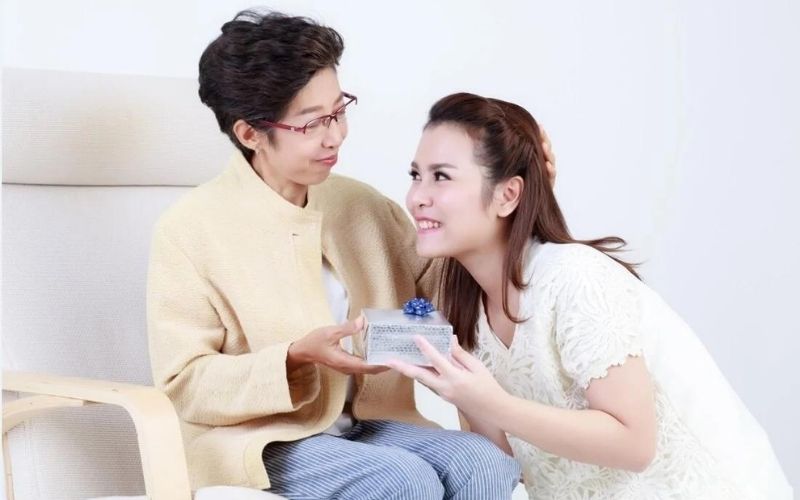 The post-wedding visit is a meaningful day to express gratitude to the bride’s family
The post-wedding visit is a meaningful day to express gratitude to the bride’s family
Although a small procedure, the post-wedding visit holds great significance as it expresses gratitude to the bride’s family for raising and nurturing her. On this day, the ritual items that the bride’s family needs to prepare include betel and areca nuts, a rooster, or simply wine and candies…
Nowadays, the post-wedding visit usually does not involve inviting distant relatives, and the couple will be accompanied by the groom’s family to visit the bride’s family. Together, they will light incense and offer a small feast at the bride’s family altar. Afterward, the two families will share a meal, and if time permits, the groom may take the bride to visit some of her relatives.
For reference: What are the components of a traditional Vietnamese wedding?
5 What the Bride’s Family Needs to Prepare for the Wedding
Financial Planning
Not only the groom’s family but the bride’s family also needs to prepare financially, as there are certain expenses that both families must bear independently. First, the bride’s family should create a list of expected expenses and allocate their budget accordingly to ensure a reasonable level of preparation.
Tray Bearers
During the betrothal ceremony, it is essential to have a team of tray bearers. Their main task is to receive the ritual items presented by the groom’s family.
Typically, the bride’s team of tray bearers consists of her sisters, close friends, or relatives. If suitable candidates cannot be found, it is possible to hire a professional team of tray bearers.
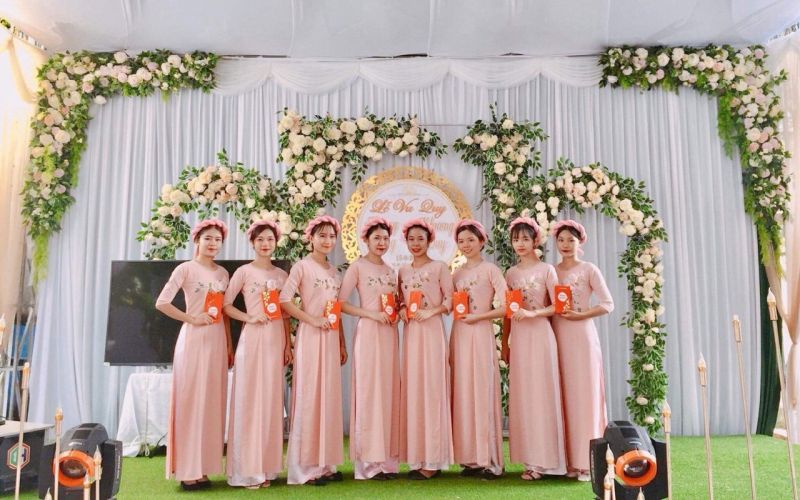 The bride’s team of tray bearers
The bride’s team of tray bearers
Importantly, the bride’s family should communicate with the groom’s family to agree on the number of tray bearers to ensure a suitable arrangement. This number may vary depending on regional customs and traditions.
Usually, the bride is responsible for renting or purchasing the attire for her team of tray bearers. It is essential to ensure that their outfits harmonize with the color scheme of the ceremony and are not too flashy compared to the bride’s attire.
The bride’s family should also discuss with the groom’s family regarding the preparation of lucky money envelopes for the tray bearers.
Bride’s Attire
The bride should prepare at least two outfits, one for the engagement ceremony (usually held in the morning) and another for the main wedding banquet (held in the evening of the same day).
For the morning engagement ceremony, the bride should wear a traditional Vietnamese long dress, known as “ao dai,” which will accentuate her grace and elegance.
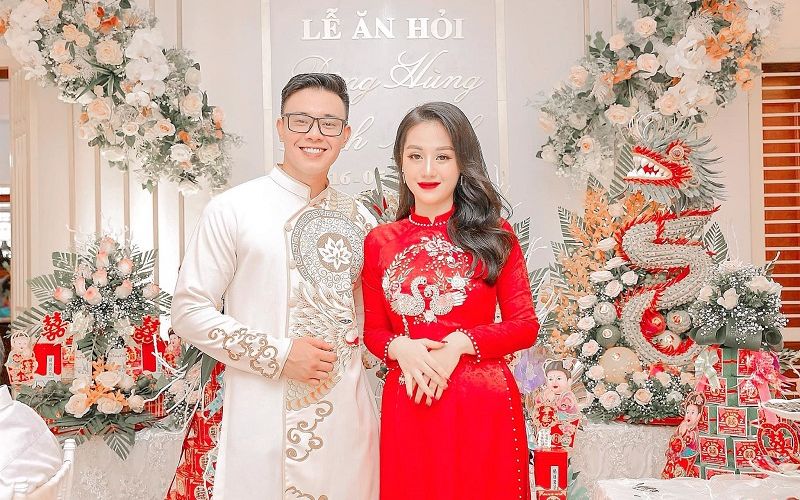 Bride’s attire
Bride’s attire
For the evening wedding banquet, the bride may prepare two to three gowns according to her preference for receiving guests, performing rituals on stage, and greeting guests at their tables…
Don’t forget to include accessories such as jewelry, a bridal bouquet, and wedding shoes to enhance the bride’s beauty and radiance. It is also crucial to consider hiring a professional makeup artist and hairstylist to contribute to the bride’s overall appearance on her special day. The bride should research and consult with the makeup artist beforehand to ensure satisfaction and avoid last-minute surprises.
Home Decoration
To ensure a smooth engagement ceremony, the bride’s family should clean and tidy their home, especially areas like the entrance, staircase, and walkways, to demonstrate their hospitality.
Some necessary decorations include hanging “double happiness” characters, the names of the bride and groom, streamers, and flowers. The family altar should be adorned with fruits, cakes, and



























